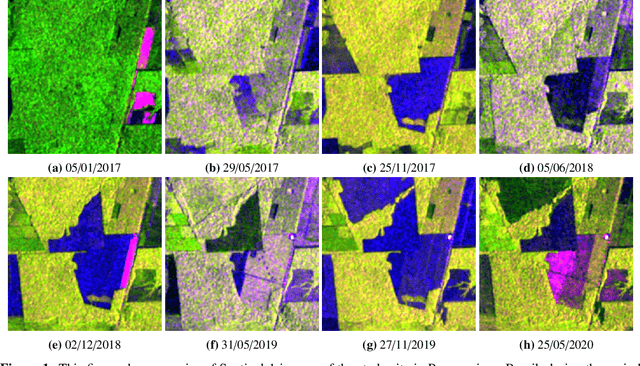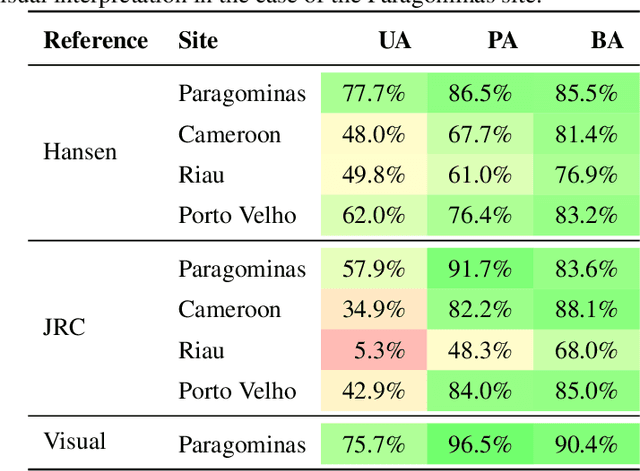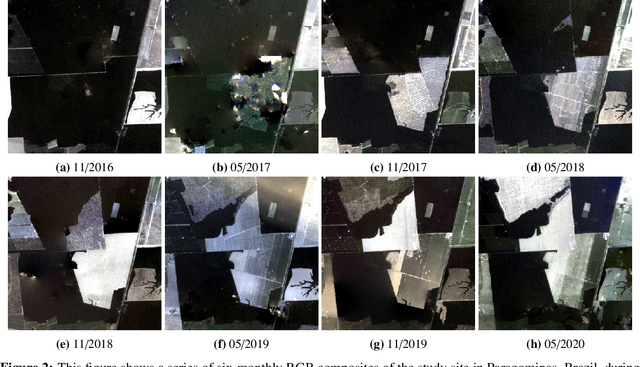Detecting Deforestation from Sentinel-1 Data in the Absence of Reliable Reference Data
Paper and Code
May 24, 2022



Forests are vital for the wellbeing of our planet. Large and small scale deforestation across the globe is threatening the stability of our climate, forest biodiversity, and therefore the preservation of fragile ecosystems and our natural habitat as a whole. With increasing public interest in climate change issues and forest preservation, a large demand for carbon offsetting, carbon footprint ratings, and environmental impact assessments is emerging. Most often, deforestation maps are created from optical data such as Landsat and MODIS. These maps are not typically available at less than annual intervals due to persistent cloud cover in many parts of the world, especially the tropics where most of the world's forest biomass is concentrated. Synthetic Aperture Radar (SAR) can fill this gap as it penetrates clouds. We propose and evaluate a novel method for deforestation detection in the absence of reliable reference data which often constitutes the largest practical hurdle. This method achieves a change detection sensitivity (producer's accuracy) of 96.5% in the study area, although false positives lead to a lower user's accuracy of about 75.7%, with a total balanced accuracy of 90.4%. The change detection accuracy is maintained when adding up to 20% noise to the reference labels. While further work is required to reduce the false positive rate, improve detection delay, and validate this method in additional circumstances, the results show that Sentinel-1 data have the potential to advance the timeliness of global deforestation monitoring.
 Add to Chrome
Add to Chrome Add to Firefox
Add to Firefox Add to Edge
Add to Edge